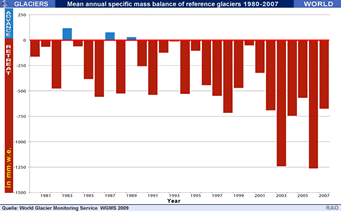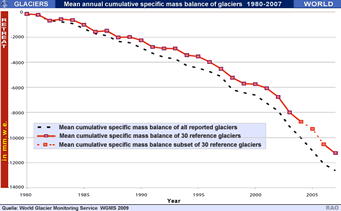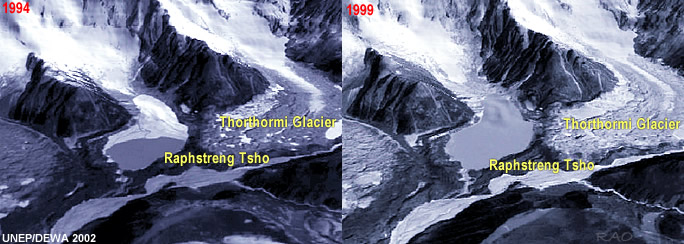| Bhutan's
glaciers and glacial lakes |
 |
Bhutan Glaciers - Glacial Lakes |
|
 |
Bhutan Glaciers - Glacial Lakes |
|
|
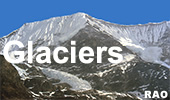 |
January
2009
|
2007:
Global glacier melt continues |
 |
| Glaciers
around the globe continue to melt at high rates. |
 |
Tentative
figures for the year 2007, of the World Glacier Monitoring Service at the
University of Zurich, Switzerland, indicate a further loss of average ice
thickness of roughly 0.67 meter water equivalent (m w.e.).
Some glaciers in the European Alps lost up to 2.5 m w.e.
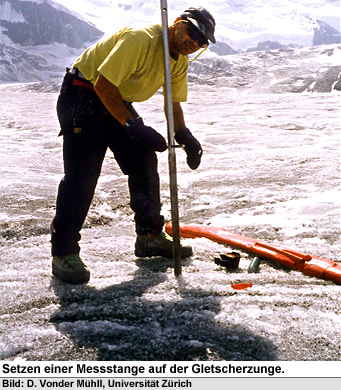 |
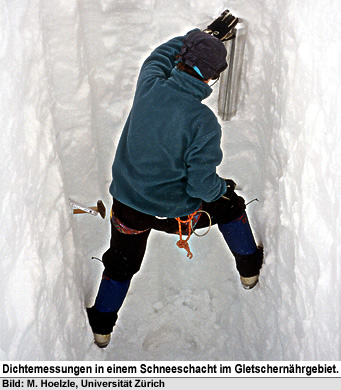 |
|
Drilling
of an observation stake on a glacier tongue.
|
Density
measurements in a snow pit in a glacier accumulation zone.
|
The
new still tentative data of more than 80 glaciers confirm the global trend
of fast ice loss since 1980. Glaciers with long-term observation series
(30 glaciers in 9 mountain ranges) have experienced a reduction in total
thickness of more than 11 m w.e. until 2007. The average annual ice loss
during 1980-1999 was roughly 0.3 m w.e. per year. Since
2000, this rate has increased to about 0.7 m w.e. per year.
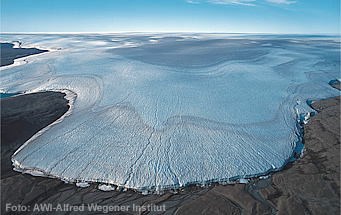 |
Glacier in Greenland (Europe)
| Michael
Zemp, glaciologist and research associate of the WGMS, said: «The
average ice loss in 2007 was not as extreme as in 2006, but there were
large differences between mountain ranges. Glaciers in the European Alps
lost up to 2.5 meters water equivalent of ice, whereas maritime glaciers
in Scandinavia were able to gain more than a meter in thickness. |
|
However,
2007 is now the sixth year of this century in which the average ice loss
of the reference glaciers has exceeded half a meter. This has resulted
in a more than doubling of the melt rates of the 1980s and 90s.»
For
the observation period 2007, dramatic ice losses were reported from glaciers
in the European Alps, such as of the Hintereisferner (-1.8 m w.e.) or the
Sonnblickkess (-2.2 m w.e.) in Austria, the Sarennes (-2.5 m w.e.) in France,
the Caresèr (-2.8 m w.e.) in Italy, or of the Silvretta (-1.3 m
w.e.) and Gries (-1.7 m w.e.) in Switzerland. In Norway, many maritime
glaciers were able to gain mass, e.g. the Nigardsbreen (+1.0 m w.e.) or
the Ålfotbreen (+1.3 m w.e.), although the glaciers further inland
have continued to shrink, e.g. the Hellstugubreen or the Gråsubreen
(both with -0.7 m w.e.).
top
All
mass balance programmes in South American reported negative values ranging
from -0.1 m
w.e.
at the Echaurren Norte in Chile to -2.2 m w.e. at the Ritacuba Negro in
Columbia. In North America some positive values were reported from the
North Cascade Mountains and the Juneau Ice Field together with a continued
ice loss from the glaciers in the Kenai Mountains and the Alaskan Range
as well as from Canada's Coast Mountains and High Arctic.
top
|
Measuring
unit 'water equivalent' |
 |
Glaciologists
express the annual mass balance, i.e. the gain or loss in thickness, of
a glacier in 'meter water equivalent' (m w.e.). This standardized unit
takes the different densities of change measurements in ice, firn and snow
into account. One meter of ice thickness corresponds to about 0.9 m w.e.
|
World
Glacier Monitoring Service |
 |
The
internationally coordinated glacier monitoring was initiated in 1894, following
the example of the Swiss national observation network, and has been mainly
under Swiss leadership since then. Today, the World Glacier Monitoring
Service (WGMS) is responsible for the collection and publication of standardized
glacier data from around the world. The WGMS is located at the University
of Zurich, Switzerland, and maintains a collaborative network of national
correspondents and principal investigators in the countries involved in
glacier monitoring. The long-term measurement series of glacier mass balance
produces one of the essential variables within the international climate-related
monitoring programmes.
 |
|
Byrd-Glacier
(Antarctica) |
top
|
Bhutan's
glaciers retreating at 30-35 metres a year
|
 |
More
than 50 experts from India, Pakistan, Nepal, UK, Switzerland, Thailand
and Bhutan have gathered in Paro to discuss glacial lake outburst, its
threats and prevention measures. For Bhutan whose very survival depends
on the stability of the lakes, officials say it is a much-needed workshop.
Bhutan
has nearly 3,000 lakes of which 24 are identified as potentially dangerous,
meaning it may burst in the not too distant future. Every river that runs
through every dzongkhag is fed by glacial lakes. To make matters worse,
the global warming has accelerated the melting of glaciers around these
lakes, filling it up fast. The current melting rate, say geology of mines
department, is about 30-35 metres a year.
Home
minister Lyonpo Minjur Dorji in his speech to the participants here yesterday
called the glacial lakes "silent tsunamis". He said Bhutan needed to be
well prepared.
There
were no clear-cut answers. That is because "a proper understanding of the
processes leading to formation of lakes, its characteristics, the triggers
causing an outburst and the consequent socio-economic impact, suitable
mitigation and preparedness measures, is yet to emerge in a holistic manner"
said UN resident representative in Bhutan, Mr. Bakhodir Burkhanov.
Director
of geology and mines department, Dorji Wangda, said that there was no immediate
threat of outburst and with the help of new technologies such as Google
Earth, mitigation plans onThorthormilake, one of the high risk lakes
in Lunana, were on track. It included draining out water from glacial lakes,
construction of channels for gradual and regulated discharge of water and
compiling inventories of the lakes.
Dorji
Wangda said that excavating works onThorthormiLake would be done next
year with 300 workers. Earlier few workers had died because they could
not adapt to the cold. There was a sum of US$ 7.8 million fund for the
mitigation works.
The
three-day meeting will focus on the nature and dimensions of the hazard
to help frame comprehensive approaches for mitigating its impact and preparedness.
 |
| Source:
Contributet by Passang Norbu, Kuensel, Bhutan's National Newspaper 2009 |
top
|
Information
|
 |
|
Links |
 |
 |
 |
External
Links |
|






